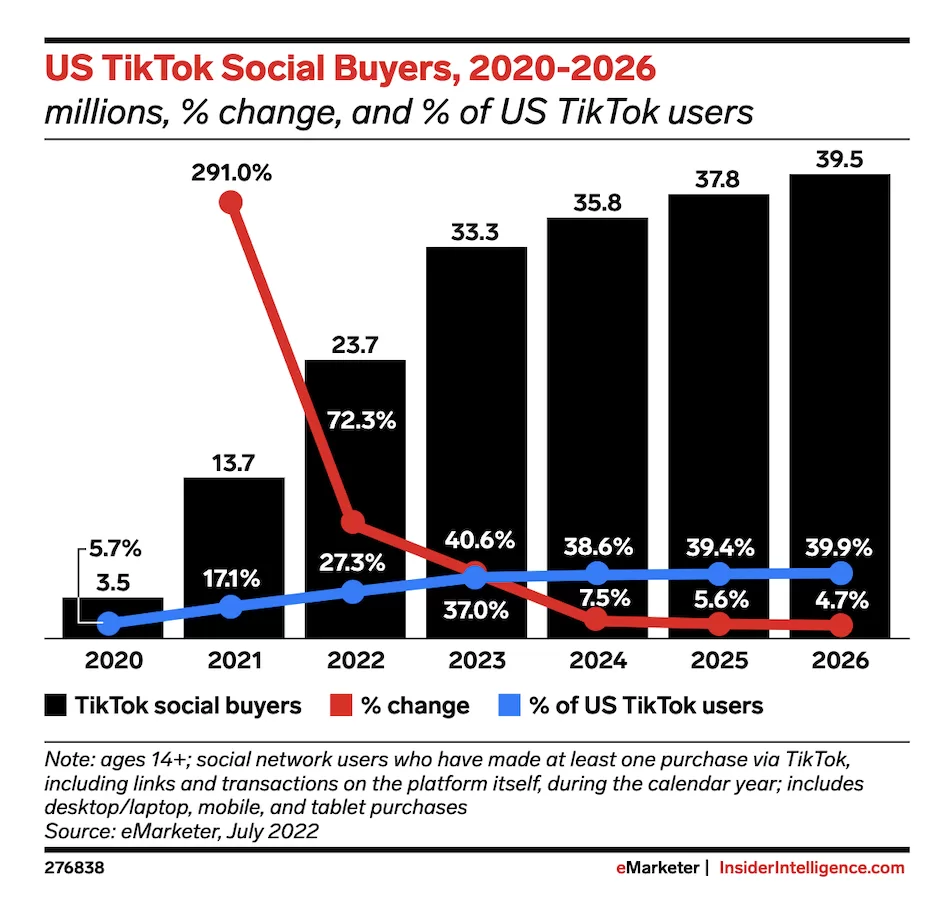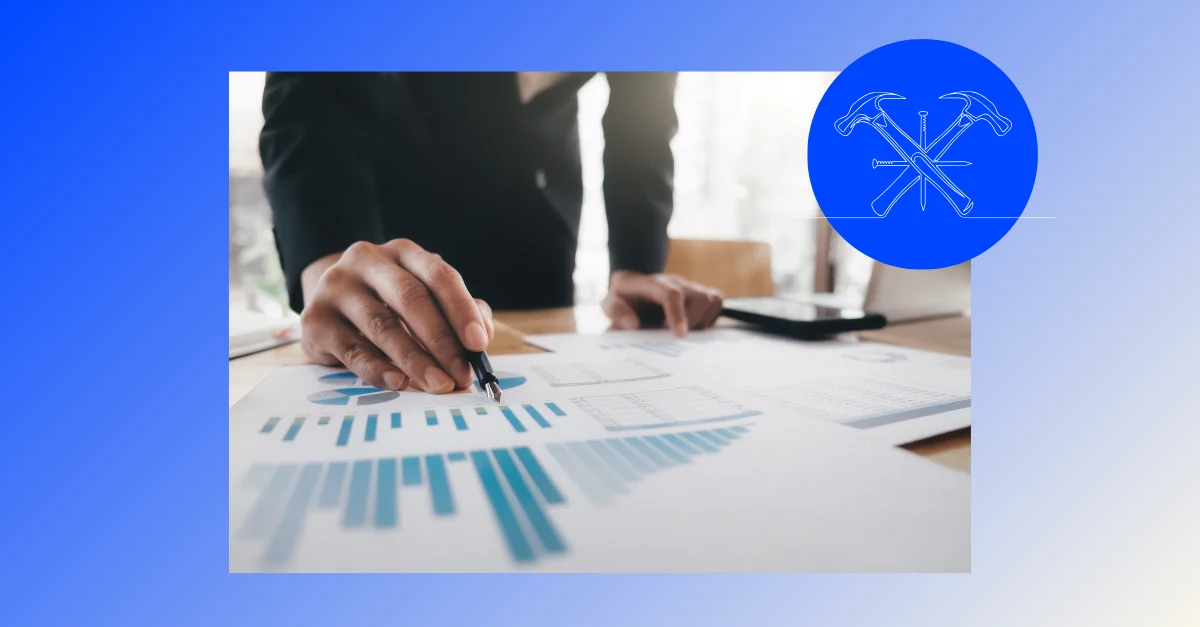We can all agree that Meta advertising isn’t what it used to be. Sure, things seemed better in 2024 than in 2023, but I wouldn’t say we’re running at 100%.
Privacy regulations like GDPR, iOS updates, and the slow dissolution of third-party cookies really threw a wrench into ad tracking. The Facebook Pixel doesn’t deliver nearly the same results as it once did and honestly, some days it feels like Meta is just shooting itself in the foot. Heck, there was an outage at the busiest time of the year!
We also have to add that Meta isn’t the blue ocean it once was. With millions of advertisers now on the platform, costs have surged to 20-year highs and every click and conversion eats into your budget way more than it used to. It’s no wonder we see platforms like Applovin and TikTok Shops becoming the new ‘it’ things.

All that being said (and you might be surprised at this) I still believe Meta is the place to be for ecommerce advertisers.
Why? Because the people are there, they are buying, and with the right targeting, you can still reach them in a cost-effective way.
But you have to go beyond what Meta is offering.
You have to invest in first-party data and visitor identification. This data will help you build smarter audiences, lower your ad costs, and get back to the results you once had. In this article, I’ll walk through how to do just that.
Contents
- What is visitor identification? (And why you’re probably not using it)
- Why does visitor identification matter for Meta ads?
- How to use visitor identification to scale your Meta ads
- Practical tips to start scaling your Facebook ads with visitor identification
What is visitor identification? (And why you’re probably not using it)
Let’s get into it, starting with the concept of visitor identification.
If you’re like most advertisers, visitor identification might not sound familiar (or like something only enterprise brands have figured out). You also may not realize that it’s everywhere. In all likelihood, you’ve seen it without even knowing!
To break it down, visitor identification is exactly what it sounds like: Someone visits your website, and you identify them. We’re talking names, emails, job titles, addresses, and more.
Here’s how it works:
- A website identity pixel identifies your anonymous visitors and matches them to a profile in a database.
- The visitor contact data is enriched with personal information and the pixel starts tracking visitor behavior (think customer journey tracking).
- This data is then sent to platforms like Meta, Google, and/or Klaviyo, giving you first-party data to fuel your CRM, ad audiences, and email flows.

🛑 Want to know how your Facebook ads are really performing? Find out with our free Facebook Ads Performance Grader!
Why does visitor identification matter for Meta ads?
For starters, these are people who visit your site but don’t make a purchase, fill out a form, or even click a button. These are the 98% of anonymous visitors you never would be able to identify otherwise.
With visitor identification, you can. You get first-party, person-level data without pop-ups, cookies, or other invasive tools.
You also get data that allows you to create really targeted and high-intent audiences. This is how you build and scale your Meta ads strategy.
How to use visitor identification to scale your Meta ads
Scaling Meta ads can be downright frustrating. As soon as you increase your ad spend, costs seem to spike even faster. In fact, to increase your reach by 2.5X, you might have to boost your budget by five times or more.
Why? Meta’s auction system isn’t exactly forgiving.
When you try to scale, you’re competing harder for the same audience. That means you’re paying more for every click, impression, and conversion.
But what if you didn’t have to compete for your audience? What if you kept building an audience of people who were genuinely interested in what you had to offer? That would scale.
So let’s look at how to scale your Meta Ads with a custom-built first-party audience.
Step 1: Restore your lost signals
When we talk about using first-party data to scale Meta ads, we have to start with server-side tracking. And in this case, we have to talk about CAPI, or Meta’s Conversion API.
CAPI is essential to Meta Ads as it restores those lost audience signals that used to drive our crazy cheap numbers. You know, the signals it used to get from browser-based tracking.
CAPI sends event data like purchases, page views, add-to-cart actions, and more directly from your website to Meta.

This data is then used to determine your Event Match Quality (EMQ) score, a number that many advertisers haven’t even heard of.
The problem with that? Your EMQ score actually impacts costs!
The better your EMQ, the better rates you get. The lower your EMQ? Well, we like to call it the Meta tax.

By sending your first-party data through CAPI, you give Meta the data it needs to understand who your audience is, what they want, and you can avoid the Meta tax.
Check this out.
DV8 Offroad, an off-road parts retailer, was previously relying on the standard Facebook tools to run their campaigns.
What happened when they started sending Meta the first-party data they identified through visitor identification? They added an additional 23K visitors to their Meta ad audiences and decreased CPAs by 30%.
That is how you scale your ads.
🎯 Need targeting help? Get the guide >> 10 Facebook Ad Targeting Strategies That Work In a Privacy-First World
Step 2: Segment smarter with first-party data
Alright, so you’ve restored your signals with server-side tracking. Step 1 down.
Now what?
It’s time to kick things up a notch by using your first-party data to segment and build strong audiences.
I think we can all agree that generic targeting is so last decade. If you want to see real results, you need to get personal and that means more granular audience segmentation.
It means going beyond basic demographics and building custom audiences based on real behaviors and interests.

It also means using your visitor identification data.
Here’s the deal:
- Collect behavioral data: With your website identity pixel in place, you can see exactly what your visitors are up to—what pages they’re browsing, which products they’re eyeing, how long they’re sticking around, etc.
- Enrich that data: Don’t just stop at top-funnel-level info like name, email, address, page views, etc. Match this visitor data with profiles in your CRM to get a fuller picture. Think past purchases, browsing habits, and even specific interests.
- Build custom audiences: Now, take all that juicy data and feed it back into Meta. Create hyper-targeted audiences like:
- Folks who visited a particular product page but didn’t add anything to the cart.
- Customers who bought one item and might be interested in something complementary.
- Visitors who lingered on your pricing page but didn’t take the plunge.
- People who live in a specific region and have an income over $250K.
This is retargeting gold!
These types of custom audiences allow you to scale because you’re not wasting spend on broad, low-intent targeting.
Instead, you’re giving Meta a list of people who are most likely to convert. As a result, your ads are more relevant, engagement goes up, and your cost per conversion goes down.
Bam!
Step 3: Use BOFU-powered TOFU campaigns
There are several types of ad objectives you can choose from on Meta and each comes with its own price tag. Some are downright pricey, while others are far more budget-friendly.
Here’s a quick rundown of common campaign types, ranked from most expensive to least expensive:
- Conversions: The holy grail for advertisers but also the priciest. You’re asking Meta to find people most likely to take a specific action, like purchasing.
- Leads: Slightly cheaper than conversions but still costly since you’re targeting users ready to share their info.
- App installs: Costs vary but they’re often in the mid-range depending on the audience and app.
- Engagement: These campaigns are focused on likes, shares, and comments, and come in at a lower price point.
- Traffic: The least expensive by far. These campaigns drive clicks and page visits without requiring high-intent actions.
Unfortunately, advertisers have traditionally had to weigh their objective options carefully. Do you sink your budget into high-cost conversion campaigns or spread it across cheaper objectives, knowing that traffic campaigns alone don’t guarantee sales?
Honestly, it’s one of the most challenging parts of running Meta Ads.
It’s also where visitor identification comes in and changes the whole game.
Here’s how it works:
- Run traffic-focused campaigns to attract a large volume of visitors at a lower cost.
- Use your website identity pixel to track those visitors and collect first-party data.
- Segment the audience based on behavior (e.g., product page viewers, cart abandoners, or blog readers).
- Retarget them with high-intent BOFU (bottom-of-funnel) campaigns designed to convert.
Here’s the beauty of this approach: You can put more of your budget into general traffic campaigns (you know, the cheapest option) because now, you’re able to identify those visitors after they land on your site.

And instead of paying extra to target high-intent users upfront, you’re leveraging affordable TOFU (top-of-funnel) traffic and converting them later through retargeting.
By shifting more of your budget to low-cost objectives like traffic campaigns, you can bring in a massive volume of potential customers, identify who they are, and re-engage them with targeted BOFU ads that drive actual conversions.
It’s efficient, it’s effective, and you won’t blow through your budget. It’s how you scale without breaking the bank.
🚨 What results can you expect from Facebook Ads? Download our latest Facebook Ads Benchmarks to find out!
Practical tips to start scaling your Facebook ads with visitor identification
Ready to scale your Meta ads with visitor identification and first-party data? Awesome.
Let’s break it down step by step so you can get rolling without overcomplicating things.
1. Implement a website identity pixel
First things first, you need to install a website identity pixel. This tiny piece of code is the foundation of your visitor identification strategy.
It tracks who’s visiting your site, what they’re doing, and feeds that data back to you in real-time.
- Make sure it’s installed on every page of your site for maximum coverage.
- Use a tool that matches and enriches visitor data to actual profiles, including names, emails, and more.
2. Set up server-side tracking with CAPI
We talked about this earlier but it’s worth repeating: Server-side tracking (CAPI) is a must if you want to scale. It restores your lost tracking signals and ensures Meta can optimize your campaigns effectively.
- Work with your web team or a developer to configure CAPI correctly.
- Test your setup thoroughly to ensure data is flowing smoothly to Meta.
- Monitor the results in Ads Manager to confirm better attribution and performance.
3. Use first-party data to build high-intent audiences in Meta
Leverage your first-party data to build audiences that actually convert.
- Segment your visitors: Use behavior-based data to create audiences like:
- Product page viewers who didn’t add to cart.
- Cart abandoners who didn’t complete checkout.
- Returning visitors who haven’t purchased yet.
- Sync your data: Feed your enriched audience data into Meta’s custom audiences to create campaigns tailored to specific behaviors and interests.
- Focus on intent: Use this data to build retargeting campaigns that speak directly to high-intent visitors, offering the right incentives to push them toward conversion.
4. Run test campaigns to validate the results
Before you try and scale to the moon, start small. Run test campaigns to see how your new first-party data strategies perform.
- Launch traffic-focused campaigns and monitor how many visitors you can identify.
- Use retargeting flows to measure conversion rates and adjust as needed.
- Analyze the cost per result compared to traditional targeting methods.
We suggest actually running your campaigns at the same time.
For example, run the same exact campaign–one with your traditional audience and the other with your custom-built first-party audience. This will give you a much clearer picture of if your new audience is working.
Here’s a sneak peek of what we saw when testing the Facebook audience against our custom audience:

Reach the right audience on Meta with these tips
At the end of the day, if you want to scale your Meta ads and retarget like it’s 2019 again, visitor identification and first-party data are what you need.
So take a step back and audit your current setup. Are you collecting the right data? Are you using that data? Do you have the ability to scale?
If not, now’s the time to make changes.
With visitor ID and first-party data, you can build campaigns that reach the right people, lower your costs, and scale just like the old days. So good luck and cheers to a scalable future!







